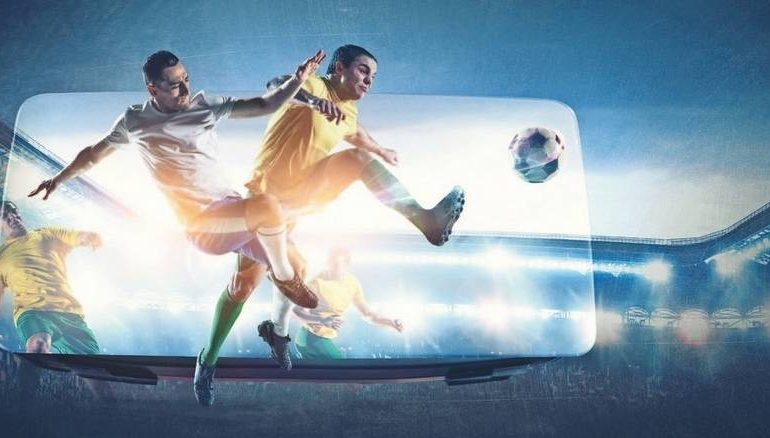Sourced from Khaleej Times
Kevin Murphy, Vice President and Head of Ericsson Levant Countries and Global Customer Unit Ooredoo, explains how the combination of 5G, AR and VR is creating completely new user experiences.
Sports fans are a passionate breed and whether they’re at the match or on their couches, they demand the full experience. For fans, and athletes alike, leading technologies enrich the sporting experience, bringing people closer to the action, and creating new immersive ways to showcase the commitment, excitement, and teamwork of sports.
The Covid-19 pandemic has led to a growth in digital experiences which may become permanent. The increase in virtual events is raising the bar for the quality and design of the experience, with audiences becoming increasingly sophisticated, demanding a more social, innovative and engaging event.
To transform the digital experience for fans, players and support staff alike, three main types of support is required; a sports performance information system, a digital experience backend system, and technology consulting and innovation services.
The combination of 5G, Augmented Reality (AR) and Virtual Reality (VR) supports completely new user experiences in sports – pushing boundaries and taking the consumer to the heart of the game itself. For a team playing before a packed stadium or a lonesome runner on a forest track, connectivity and mobility enable new values in an emerging internet of sport.
This is where 5G can be a vital tool for the sports sector, as it seeks to re-invent the fan experience at home and at the sports arena. Sporting events could better serve both the travelling fan attending every game in person and the die-hard fan catching the game remotely.
In this age of digital and mobile consumption, fans expect an experience boosted by their mobile devices. Through live-streaming video, mixed reality experiences and real-time access to information about the game, the next generation in mobile wireless technology can create an enhanced experience, reinventing how fans participate in sports.
Immersive Sporting Experiences at Home
Sports fans today are looking for new ways to connect to the sporting experience digitally. There is potential to create more immersive fan experiences with the introduction of 360-degree cameras, and virtual and augmented reality. Fans can walk the sideline, see what the goalkeepers are seeing, or join the victory celebration in the locker room – all serving the purpose of bringing fans closer to the action at the venue from home.
What’s more, the trend of increased solitary viewing due to the development of personal screens and on-demand viewing could be reversed thanks to the capabilities and promises of Virtual Reality (VR). It can provide a way to connect with friends watching the game at different physical locations, creating a “virtual hangout” for the times you can’t be there in person.
VR also brings an exciting prospect to the table: the ability to watch 4K/UHD content without owning a big physical screen and allowing on-demand viewing to become more of a social activity than it is today. Soon, friends and people with similar interests can watch content together in a VR living room, viewers will have the freedom to look anywhere in every scene of a movie and consumers can experience a football match with other fans in a VR arena, as if they are actually there.
And for sports fans in areas that don’t have access to fibre coverage, 5G enables fixed wireless access applications for very high-quality video streaming in 4K video, 360 or AR/VR formats.
This means that you get to watch the 4K video on your mobile device. But 5G is also so fast and so reliable that it will make fixed wireless a real challenger in the broadband market, streaming 4K video wirelessly to your big screen TV as well. And it’s not just the quality either. You’ll be able to choose what camera angles you like, or if you want information overlaid on the screen, or if you want to watch in VR or not.
Creating the Connected Stadium
A great experience at the arena is fundamental to enjoying live sports. Where fans today see broadband connectivity to their smartphone for social media posts as table stakes, there is so much more that could be done digitally to connect fans to the action. This is an area where 5G can improve the overall experience, compared to standard WiFi solutions.
5G can expand the experience for fans at the game, creating new possibilities by connecting sensors in balls, goals, and even players – all in real-time with extremely low latency. The next generation technology can deliver enough capacity to the stadium for fans to stream high-quality video and share the views from their seats with others at the same match.
Other future changes coming to the fan experience with 5G connectivity include the ability to experience matches from new vantage points, using phones to switch between different 360-degree, ultra-high definition virtual reality cameras filming all around the stadium.
The introduction of 5G at a stadium also creates a horizontal platform to serve additional applications. Fans would be able to monitor and track athletes’ performance during practice and competition in real time, for example. This represents a major opportunity for service providers to deliver enhanced networks in stadiums and arenas to ensure their subscribers are well connected.




